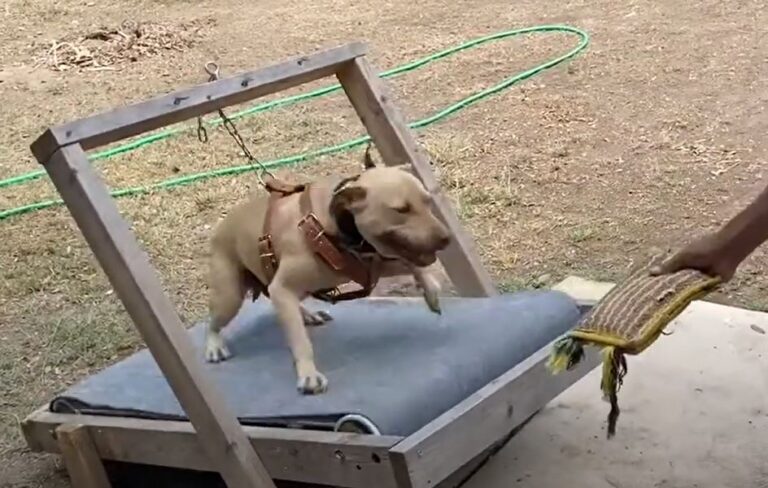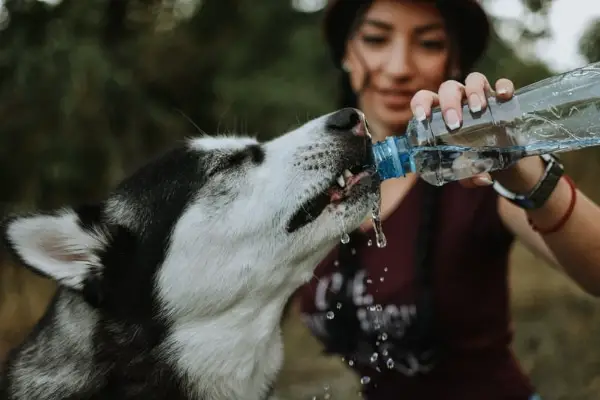Do Dogs Bond After Mating? (What Science Says)

There is often a natural attraction between a bitch and its ‘special friend’ when she is in season. It’s easy to humanize these interactions or wonder if they experience a deeper bond after such an intimate act, like humans. But what does science say? Do dogs truly bond after mating or is it a simple, instinctual act?
From the scientific viewpoint, a clear and distinct bond isn’t typically formed between canines post-mating. When it comes to mating, canines are driven by their instincts which are primarily directed toward the propagation of their species and not necessarily toward establishing a sustained bond. However, dogs are capable of bonding with each other and forming true friendships but not on the basis of mating.
It is not, however, uncommon for dogs to display particular behaviors after mating, which might be misconstrued as bonding. For instance, the male dog might become more protective towards the bitch, or they might spend more time together. Nevertheless, these behaviors are often temporary and more related to the mating process and the immediate aftermath rather than a subsisting passionate bond.
Read Also: Will A Dog’s Heat Cycle End After Mating? (Demystified!)
Jump to Section
The Science Behind Dog-dog Bonding
The process of dog-dog bonding can be complex, involving a combination of instinctual behavior, social learning, and hormonal influences shaped by evolution to ensure survival.
The biology behind this type of bonding involves multiple aspects. Oxytocin often referred to as the ‘love hormone,’ is usually released during positive social interactions, such as grooming or playing. Studies show increased levels of oxytocin during positive interactions amongst canines, which may help to reinforce the bond between them. Pheromones are chemical signals secreted by various glands in dogs that can convey a wealth of information to other dogs, ranging from mood to reproductive status. Certain pheromones can even encourage social bonding and cohesion between dogs
Socialization experiences are another critical component in dog-dog bonding. Early exposure to socialization creates an atmosphere for strong bonding among dogs. This process may involve learning canine body language and communication signals, which can facilitate better understanding and bonding between dogs.
Individual personality traits, learned behaviors, and even breed predispositions can also contribute to the ability of dogs to bond with each other. For instance, some breeds, like golden and labrador retrievers, pugs, and beagles, are known to be more sociable than others, and individual dogs with more social personalities are often more likely to form bonds
Do Dogs Bond With Each Other After Mating?
While it is an attractive narrative to envision two dogs forging a profound emotional connection post-mating, the scientific reality offers a more subtle perspective.
In essence, science suggests that dogs do not commonly form a long-lasting bond with each other post-mating. This argument is rooted in the understanding of pooches’ primary basis to mate, which is driven by their instincts and biology rather than emotional bonding.
There are, however, associated or post-mating behaviors, such as the stud becoming protective or spending more time with the bitch. These are often temporary, strongly influenced by hormonal fluctuation and instinctual behaviors rather than a sustained emotional bond. For instance, the hormone oxytocin, the ‘love hormone,’ levels surge during mating. This hormone facilitates bonding and social interactions in many species. However, in the case of dogs, this oxytocin surge is generally short-lived and does not lead to an enduring bond between the mating canines
Thus, the nature of canine mating behaviors does not necessarily lend credence to the formation of persisting bonds between mates. However, it’s worth noting that hounds are capable of forming strong bonds with other pooches outside of the mating context. Factors such as extended interaction, shared experiences, and mutual trust, much like in human relationships, can foster these bonds.
Dogs’ Post-Mating Behavior
Behavioral changes in dogs after mating can be quite evident, and they differ between males and females. However, the changes also depend on each dog’s personality, health, and even breed.
Male dogs often show a notable change in behavior after mating. One common change is a decrease in aggression. This is likely due to their expended energy during the mating process and a temporary reduction in the urge to seek out females. This decreased aggression can sometimes make male dogs appear more relaxed or placid.
Following the physically demanding process of mating, male dogs might also show signs of increased appetite and lethargy. It’s quite normal for them to eat more to replenish their energy and sleep more than usual to recover. Additionally, it is common to observe an uptick in marking behavior. This could be a way of communicating their presence to other dogs, establishing their territory, or signaling their recent mating activity.
If other females in heat are in the vicinity, the male dog might not show a reduction in interest even after successful mating. Their natural drive to reproduce can remain high if potential mates are present, causing them to continue to show interest.
For the bitch, her post-mating behavior can be quite different. If the mating leads to pregnancy, hormonal changes will start to affect her behavior. She may show signs of morning sickness, similar to humans, changes in appetite, attention-seeking, etc.
As the pregnancy progresses, activity levels might decrease, and she could become more protective and selective about her social interactions and may exhibit nesting behaviors.
In cases where the mating does not result in pregnancy (known as a pseudo-pregnancy), the bitch might still show some of these behaviors due to hormonal changes mimicking a real pregnancy. This includes behavioral changes like nesting or even physical changes like enlarged mammary glands
It’s important to note that these behaviors can vary widely depending on the individual canine, their personality, and their environment
Will A Male Dog Hang Around After Mating? My Male Dog Won’t Leave The Female Alone.
The stud’s instincts urge him to ensure that his genes are the ones passed on to the next generation. In the quest to preserve his lineage, he may try to keep other potential studs away from the bitch leading to him ‘guarding’ her. This can manifest as the stud sticking close to the bitch, following her around, and generally being more attentive or protective than usual. Additionally, the scent of the bitch, particularly if she is still in estrus (heat), can continue to attract the stud
However, this behavior is usually temporary and linked to hormonal changes associated with mating and its immediate aftermath. A return to normal hormone levels will cause a proportional return to normal behavior by the studs
Do Dogs Still Bleed After Mating? Everything You Need To Know
How Many Days Will A Female Dog Let A Male Mount Her?
This is largely dependent on the estrus stage of the bitch. The estrus stage is the receptive stage of mating. This phase lasts for approximately 5 to 9 days, but this can vary between individual pooches and can even be as short as three days or as long as 21 days in some cases. During this period, the bitch is receptive to mounting by the stud. This is also the most fertile period when successful mating can result in pregnancy.
So, in essence, a bitch will typically allow a stud to mount her for about 5 to 9 days during her estrus cycle, but this can vary significantly between individual dogs. It’s also crucial to remember that these timeframes can be influenced by various factors, including the dog’s age, health status, and breed. For information specific to your canine, it is always recommended to consult with a veterinarian.
Helpful Tips To Strengthen The Bond Between Two Dogs
Strengthening the bond between two dogs can be an enriching process. Here are some practical tips to help facilitate a stronger bond between your canine companions:
1. Proper Introductions: First impressions matter. When introducing two dogs, ensure it’s done in a neutral environment to avoid territorial behaviors. Gradual introductions, allowing them to sniff and observe each other from a distance before allowing close contact, can help set a positive tone for their relationship.
2. Joint Training Sessions: Training together can help to foster a shared sense of purpose and camaraderie. Use positive reinforcement techniques to reward good behavior. Consistency and patience are key.
3. Coordinated Feeding: Feed them at the same time but in separate spaces. This prevents competition over food and helps establish a routine they associate with each other.
4. Playtime and Exercise: Regular playtime and exercise are essential for bonding. This could involve walks, fetching games, or any form of shared activity that they enjoy. Ensure equal opportunities are provided for each to participate.
5. Encourage Positive Interactions: Encourage positive interactions with adequate rewards. This could be as simple as a pat, verbal praise, or a small treat. This helps them associate good behavior and cooperation with rewards.
6. Respect Individual Needs: Every dog has a unique personality and individual needs for rest, space, and attention. Be observant and considerate of these needs to prevent jealousy or resentment
7. Calm and Assertive Leadership: Dogs respond to calm and assertive leadership. By showing that you’re the pack leader, you can guide their behavior toward each other, helping to create a calm and balanced environment
8. Socialization: Regular exposure to different environments and other animals can help to build their confidence, making them more comfortable around each other and reducing potential anxiety or aggression
9. Consult a Professional: If your dogs are consistently struggling to get along, consider reaching out to a professional dog trainer or a canine behaviorist. They can provide tailored strategies and guidance to help improve the relationship between your pooches
Read related posts about





